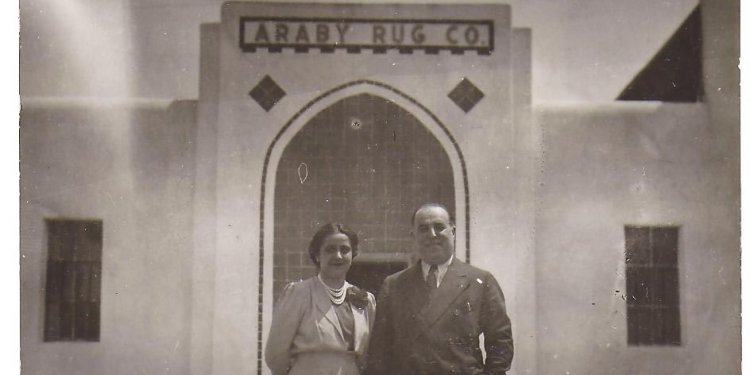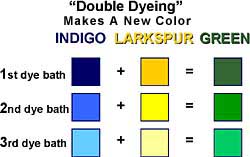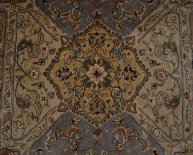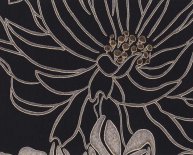
Used Oriental Rugs
 There exists a very widespread belief that "vegetable" or "natural" dyes are superior to "synthetic" dyes, and that a rug woven with "vegetable" dyes is in all ways a better carpet than a rug woven with synthetic colors. Indeed, it is usually difficult to separate your lives the dyestuffs utilized in numerous rugs into those two neat categories, and also had been this feasible, some "vegetable" dyes are much much more fugitive in color if not damaging to your wool than the "artificial" dyestuff that yields the same color.
There exists a very widespread belief that "vegetable" or "natural" dyes are superior to "synthetic" dyes, and that a rug woven with "vegetable" dyes is in all ways a better carpet than a rug woven with synthetic colors. Indeed, it is usually difficult to separate your lives the dyestuffs utilized in numerous rugs into those two neat categories, and also had been this feasible, some "vegetable" dyes are much much more fugitive in color if not damaging to your wool than the "artificial" dyestuff that yields the same color.
In general, "vegetable dyes" tend to be taken up to be an indication of a more traditional, more rural, much more country carpet weaving, while synthetic dyes are considered much more characteristic of town or commercial manufacturing. Even this difference reduces, but when one realizes that artificial azo dyes (an acid direct dye that yields yellowish or orange-red) were introduced to many weaving areas between 1875 and 1890, by the turn of century were accessible to numerous outlying weavers. If a village weaver could obtain a synthetic dye, he or she was very possible to use it appropriate alongside their traditional dyestuffs. Simply because a rug is 50 yrs old does not always mean it's "vegetable" colored. Nor does a "vegetable" dye guarantee a lengthier life or higher price to the carpeting. The "vegetable" black we find in numerous old Turkish and Balouch rugs is really corrosive that regions of black colored nap will undoubtedly be completely used away while nap of various other colors is still dense and completely piled. Had the black already been a chrome synthetic, the carpet is in better condition.
In the past two decades there has been an enormous increase in the quantity and selection of new vegetable dyed rugs available. The trend started in western chicken into the late 1960's, but knowledge of veggie dyeing has already been re-introduced into Afghanistan, India, Pakistan, and Nepal.
Common "Vegetable" Dyes.
| Colors inside rug | With this material | Records |
| purple to orange | base of the madder plant | Rubia tinctoria |
| salmon | exhausted madder dye | as dye bathrooms are re-used, the dye gets weaker and colors have lighter |
| bright red to burgundy | cochineal (dried out insect carapace) | often from Dactylopius coccus |
 blue-red to purple-red blue-red to purple-red |
lac (resin released by pest) | frequently from Coccus laccae |
| light blue to navy | indigo (obtained from the indigo plant) | Indigoferra |
| pale-yellow to yellow-brown | larkspur or isparuk (a flowering plant) | Delphinium sulpureum |
| weld (a flowering herb) | Reseda luteola | |
| brown | oak bark, tree galls | Quercus |
| black | tannin, oak-tree galls, iron | this dye is actually damaging to wool |
| green | double-dye of larkspur and indigo |
Vegetable Dyeing Techniques.
Common vegetable dyes
The most popular veggie dyes are indigo (originally gotten by extracting and fermenting indican from leaves regarding the indigo-plant), madder (generated by boiling the dried out, chunked root of the madder plant when you look at the dye pot), and larkspur (produced by boiling the crushed leaves, stems, and flowers for the larkspur plant). These dyes produce, respectively, dark dark blue, dark rusty-red, and muted gold. Long ago dyers noticed that as more wool ended up being dyed in a single dyepot, colors became weaker and weaker. Dyers utilize this idea of depleated dyes for their advantage. The very first dyeing creates a-deep, strong color. Subsequent dyeings in the same dyepot create lighter, softer colors (such as the three tones of indigo, madder, and yellow illustrated here):
Dyers also rapidly learned to combine colors to produce different colors. There was, for-instance, no "vegetable" dye product that yields green (a significant color if you should be contemplating weaving a floral design!). Initially dyeing wool azure, then dyeing it once more with yellowish, does create a green color. If you look closely in the green color in a vegetable-dyed rug, you will generally see that colour is irregular, more blue-green in some areas, and much more yellow-green in other people. This is because regarding the double-dyeing strategy:
Therefore, utilizing the thought that exhausted dyes create different hues, and by combining some dyes through overdyeing wool, dyers can produce a surprisingly large pallette of colors from a really restricted selection of products. This type of person smart!

















